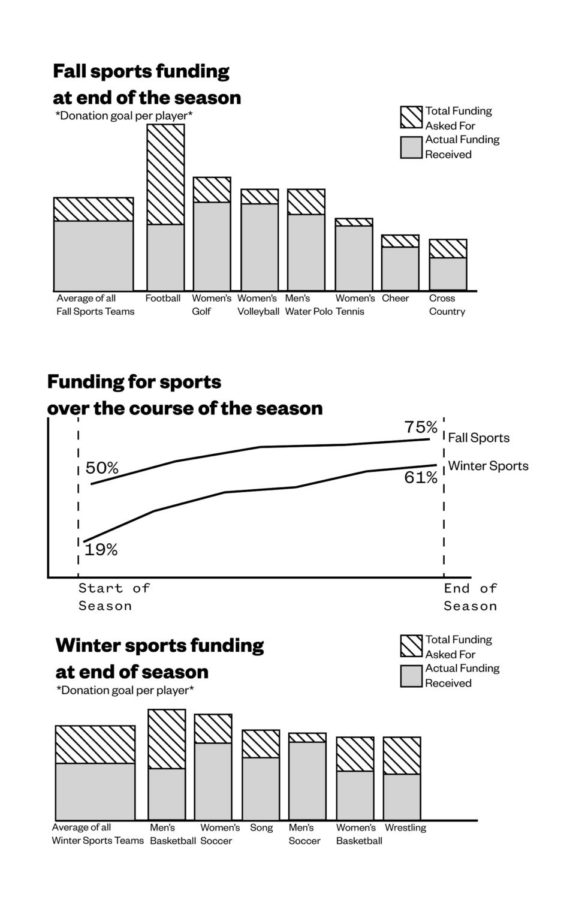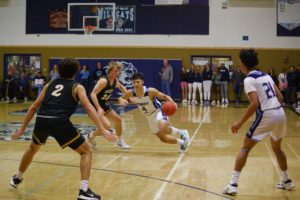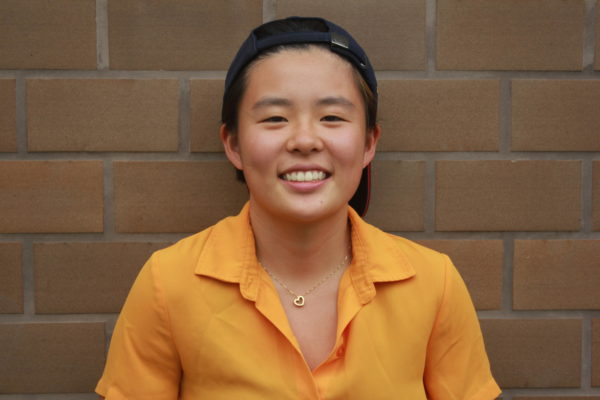Low donation rates threaten the future of winter sports
May 9, 2023

This year, low donation rates among winter sports like basketball and wrestling have forced programs to cut down on competitions and coaching stipends.
Each DVHS sport requires funding for necessities like equipment, league fees, coaches and uniforms. However, fees can vary vastly based on each program’s needs: the football team, which needs equipment for freshman, junior varsity and varsity teams, asked for a $600 donation from each player last season; the cross country and track teams, which provide uniforms and no other individualized sports equipment, asked for a $185 donation. But what may seem like steep prices often barely cover basic operating costs, which often forces programs to cut coaches, freshman teams or junior varsity teams.
“Usually the first thing we have to cut is paying coaches, and that hurts,” Principal Evan Powell said. “They’re giving 20 to 25 hours a week for our students. They deserve the $3,000 for the three and a half months they’re working. When that’s one of the first things we have to cut, it’s just really sad and unfortunate because of how much that they put into the sports.”
Before the school gets to the point where cutting coaches’ pay or different teams are an option, administrators work to figure out how to raise contributions through fundraising or lowering donation rates
“Since the fall, we’ve established that we want to fundraise to help bring down the donation ask, which is why the spring sports donations are lower. We are hoping to get a little bit of a donation and a little bit of fundraising, so what would have been maybe a $350 donation is now a $230 donation,” Mr. Powell said.
Money raised from tickets for football, basketball and volleyball games is a major source of funding for all sports. These profits go into a general athletic fund that offsets costs for sports with drastically low donation rates, like cross country, wrestling and boys and girls basketball. Last season, cross country athletes were asked to donate $185. Approximately 63% of the team contributed. It was the second lowest donation turnout out of all fall sports, despite being the least expensive. Football had the lowest donation turnout, with 40% of the team contributing the full $600. But in a program like football, which has three full teams and the highest donation ask, last season’s total was still relatively high. In all other fall sports teams, at least 75% of the team contributed, which made the programs eligible for a $500 bonus. None of the winter sports teams reached this threshold. Boys basketball had the lowest donation rate out of all winter sports, with 46% of the team paying the $400 donation. Next was wrestling and girls basketball, in which 55% and 59% of each team paid the $300 donation.
“All my winter sports were really low this year,” Rachel Ratcliff, the chair of the DVHS Athletic Boosters, said. “We had, overall, the best year we’ve had in many years, and we’re still not even hitting 50% donation rates for some of our sports, when we need at least 70% or higher to be able to operate their operating costs, which means basic stuff like equipment, uniforms and coaching stipends.”
In recent years, falling donation percentages have forced school officials to consider how to cut costs while maintaining the programs.
“When we get to an average of 55-60% donations across the full year, we have a shortfall, and we’re not going to be able to buy equipment or new jerseys,” Mr. Powell said. “So we’re going to try to cut those things out first and hope that we can make them up next year.”
At Dougherty, where approximately 3,000 students participate in sports each year, the low donation rates impact their seasons by decreasing the team size or cutting competitions. Some programs don’t have the budget to support so many people, which can make them cut competition opportunities. These losses can decrease a team’s shot at making it further in league or state competitions.
“Dougherty Valley is definitely on the map. We used to be thought of as just an academic school, but we’re really not. We had cross country runners go to state, our men’s basketball team won the NCS championships and our men’s soccer won EBAL this year,” Ratcliff said. “So I see a really bright future.”
Besides donating, families of Dougherty students can support the athletics programs by becoming members of the Athletic Boosters committee or buying from the Snack Shack at DVHS sporting events.
“We go to an amazing school,” Ratcliff said. “But sometimes sports are a child’s only outlet, so we want to support as many sports programs as possible.”





